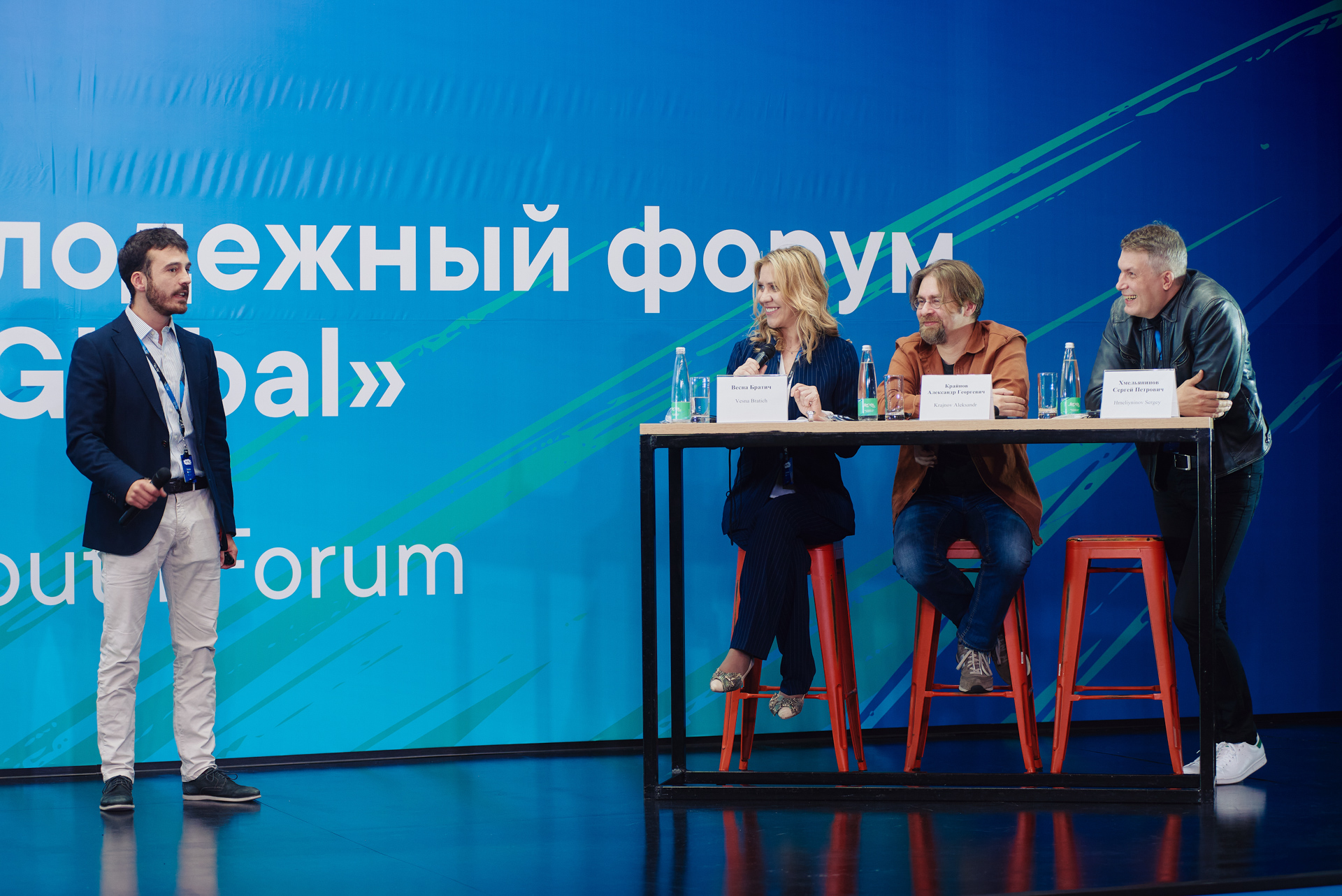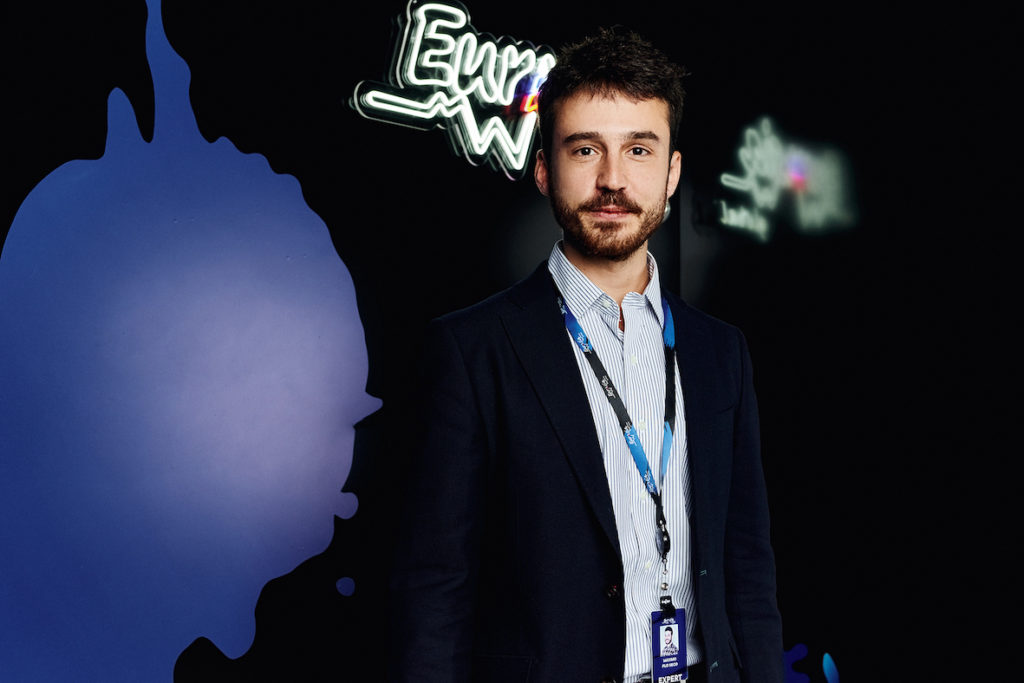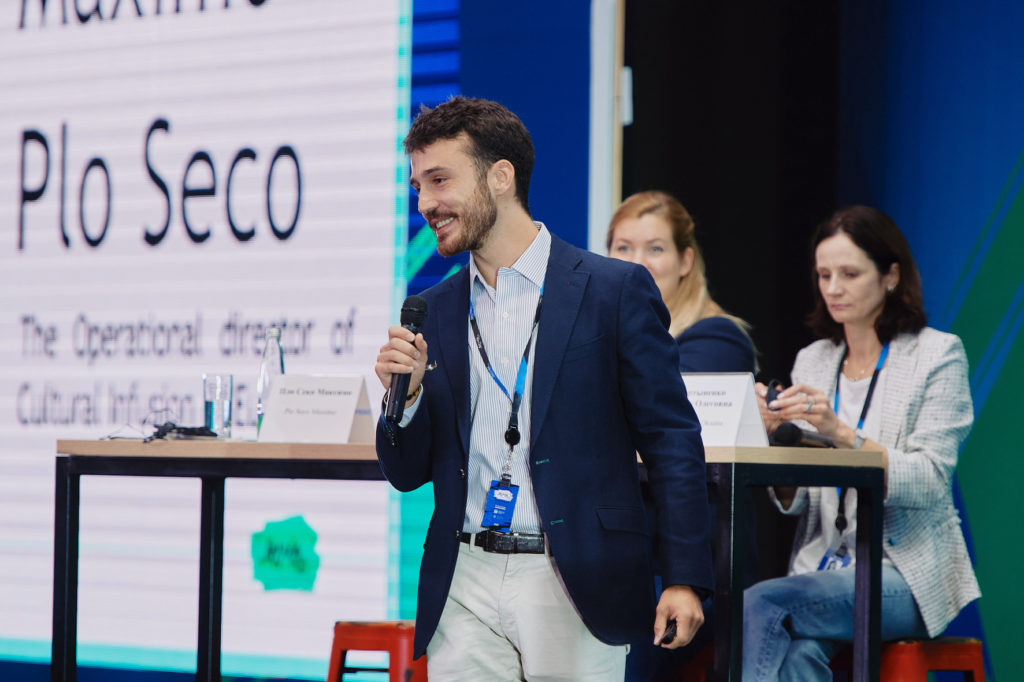
Creativity and diversity were on full display this month as Diversity Atlas’ Director of Operations for Europe, Maximo Plo, represented Cultural Infusion at the International Youth Forum, Eurasia Global in Orenburg Russia.
Eurasia Global aims to build practice-oriented dialogue between young people in Russia and foreign states. This year’s theme was The Voice of Eurasia: What is the Future of Youth in the Creative Economy?
During this event, held in September 2021, Maximo shared his insights and expertise about our platform Diversity Atlas which provides organisations and conferences rich data about the cultural and demographic diversity of its working environments.
By facilitating dialogue about the importance of creativity and diversity and the role of intercultural understanding, Maximo discusses the way that Diversity Atlas can be used to foster creativity, innovation and critical thinking which are key skills for building socially cohesive societies.
Here, you can discover the layers of Diversity Atlas through the various talks, interviews and interactive activities that Maximo led at the forum.
Unpacking Diversity and the Value of Diversity Atlas
In an interview, Maximo provides an introduction to Diversity Atlas. He explains, “Diversity Atlas comes from the realisation that we just don’t know who we are. It is the product of a number of years of research, trying to bring together data sets of all the religions of the world, world views, different ethnicities, cultural heritages and languages so that we are able to map all of this cultural diversity and intersectionality with demographic attributes, and are able to tell an organisation this is who you are.”
Maximo shares our belief at Cultural Infusion that by identifying ‘who’s missing from the conversation’ and learning about the identities of others, we can foster intercultural harmony, not just in workplaces, but in the broader community through the impact of achieving mutuality.
Asked how we can measure diversity, Maximo discusses our unique index which is based on the four pillars of culture: country of birth, cultural ethnicity, language and worldview/religion. From here, we develop a score which can be utilised by organisations and conferences as a benchmark and can encourage understanding and continuous improvement.

Maximo also delves into why it is important to encourage diverse workspaces. He explains that often, due to the nature of our globalised society, we are subject to the negative effects of the media, including the spread of stereotypes or prejudices. To combat this, Maximo proposes that we create “spaces for people to come together and get to know each other across their differences”.
Asked what is diversity and what kinds of creativity and diversity we are exposed to in the world, Maximo provides a succinct yet profound response, ‘diversity is everything that makes us unique’.
Finally, Maximo is asked about the steps that organisations can take to ‘infuse diversity’ within their workplace. Below are some of his key points:
- Understand that diversity is a “journey”
- Acknowledge the “diversity in the room” by leading workshops, celebrating cultural days and creating a safe and inclusive space for everyone
- Be willing to make “statements of commitment and compromise” and “work with your community”
- Be open-minded; “think critically and listen to other people…put yourself in their shoes”.
You can watch the full Forum Eurasia interview.
The Relationship between Creativity and Diversity

At an event about creativity and diversity, Maximo explores the importance and relevance of creativity today. He expresses,
“One of the reasons to be hopeful for the future is our ability to adapt and be innovative. Being creative is an indicator of future success.”
He then illustrates the role that diversity plays in building creative environments. Maximo notes, “‘The more perspectives that come in a team, the more likely that our teams are going to be innovative.”
“If you know that you’re with people that have a different point of view, have lived a different life and have seen different things in their life, then you’re probably going to be thinking a little bit more critically.”
Through these thoughts, Maximo shares the complexity of diversity and inclusion work and the benefit of embracing it to acquire rich ideas and new ways of thinking as the basis of creativity and innovation.
You can watch the whole Forum Eurasia panel discussion (Maximo starts around minute 32.40).
An Activity: Diversity Bingo
During the forum, Maximo leads an educational activity called Diversity Bingo.
He asks the audience to each write down their five closest friends and create four columns with the categories: country of birth, age, educational level and disability.
He then asks audience members to go through each column and allocate one point for every friend that is similar to them in the given category. Once the points have been totalled, Maximo reveals the message of this game; that the more points you have, the more similar your in-group is to you.
He guides the audience to reflect on their own ‘in-group bias’ which encompasses the notion that ‘the people that you spend the most time with are the people that influence you the most’.
In-group bias is a type of unconscious bias. Everyone has unconscious biases, which is normal and natural. The goal of activities like Diversity Bingo is to create awareness about our biases and the importance of taking into account the perspectives of people with different lived experiences than ours.
You can watch the Voice of Eurasia session (Maximo begins after 1 hour and 14 minutes)
Map Your Next Conference with Diversity Atlas
To prepare for your next conference, contact us about booking one of our inspirational, engaging and highly knowledgeable speakers to guide the conversation and even conduct an insightful survey with Diversity Atlas.
You will be able to map the unique and diverse backgrounds of those attending your conference and discover rich data to help you understand and appreciate the potential for new and creative ideas.
Share this Post